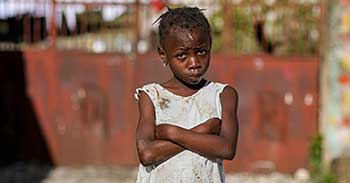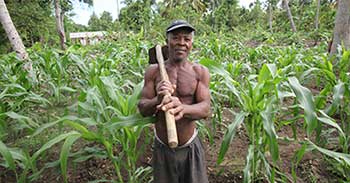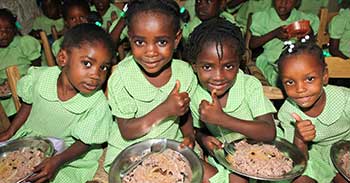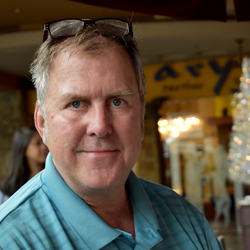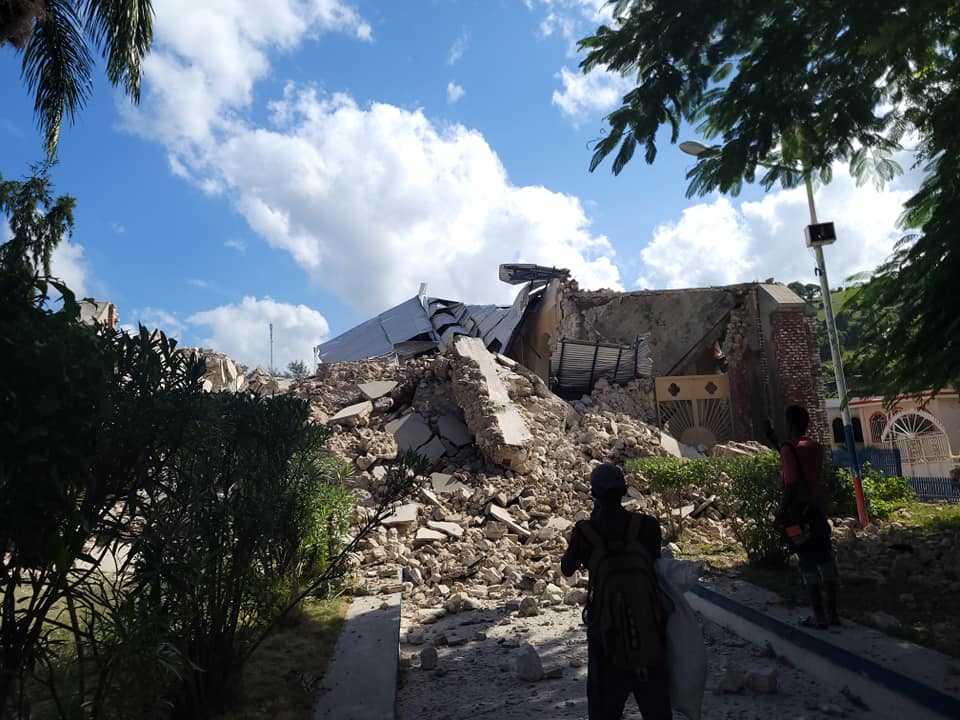
Latest news about the Haitian disaster
At least 2,000 have died and 10,000 have been injured since the earthquake in Haiti, 500,000 children are in urgent need of food, clean water, and a roof over their heads.
"The tents we had have collapsed now, due to the storm," says our employee Reginald Celestin.
This has happened:
On Saturday 14 August at 08.29, local time, Haiti was hit by an earthquake with a magnitude of 7.2. The quake had its epicenter on land in the southwestern part of Haiti, just over 120 km from the capital Port-au-Prince.
In 2010, Haiti was hit by an earthquake with a slightly lower magnitude of 7.0. At that time, between 212,000 and 300,000 people died, according to de Haiti's official figures.
The devastation is this time reported to be greatest in the areas around the coastal towns of Jérémie and Les Cayes. Jérémie is located on the north side of the western headland and Les Cayes on the south side.
Star of Hope's operations manager in Haiti, Myrtha Dór and Tony Boursiquot, were in their home outside Port-au-Prince when the earthquake started.
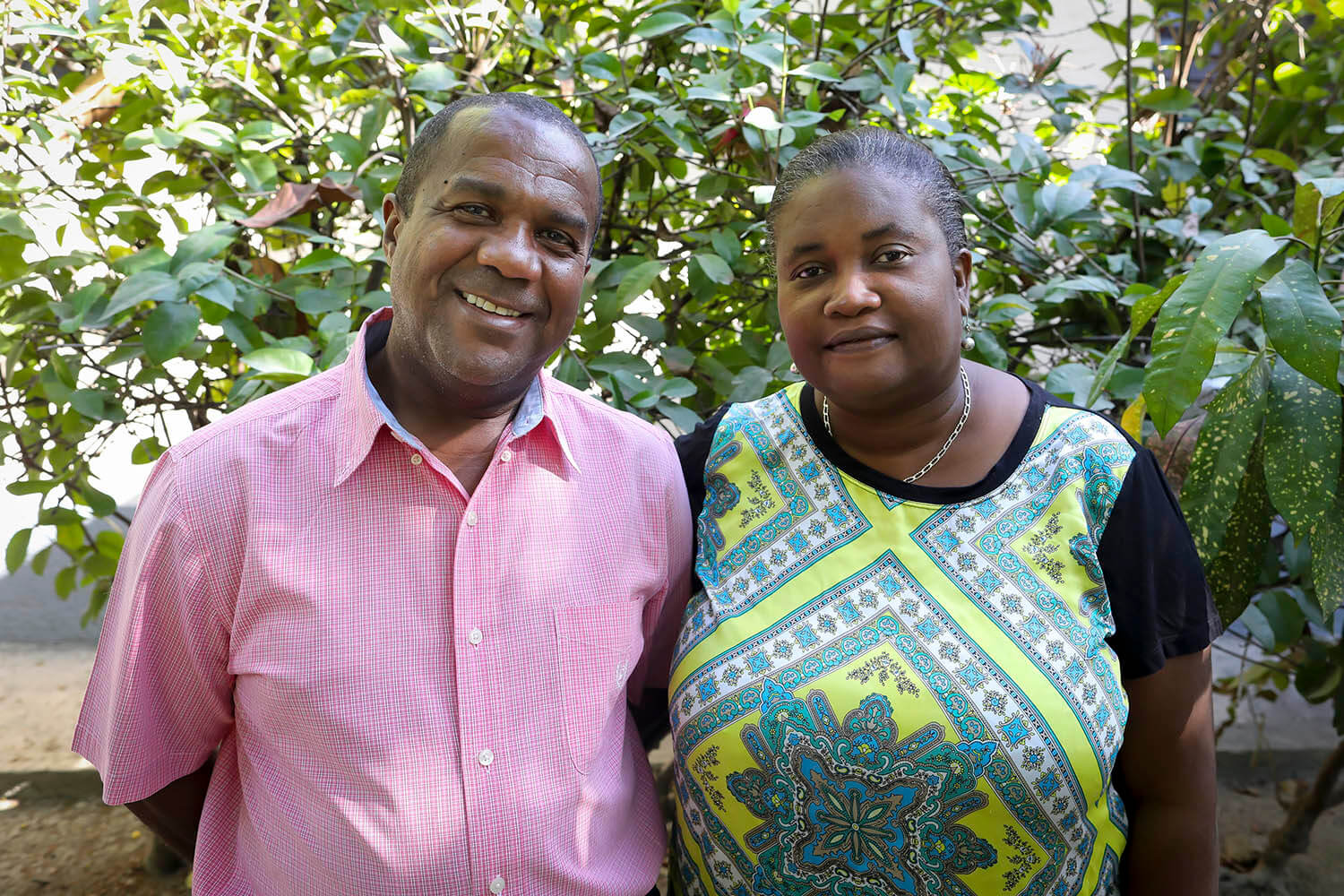
"I was still asleep when I felt my bed start to shake violently, says Myrtha. At first, I thought it was my husband who was trying to wake me up in a brusque way. When I realized that I was alone in the room, I rushed to the front doors. All the horrible memories from 2010 came back. The sound of collapsing houses and screaming people, covered by the heavy dust that settled all over the country."
On Saturday and Sunday, Haiti was hit by 19 aftershocks with a magnitude of 4.0 or higher. The strongest aftershock was measured at 5.8 and occurred 15 hours after the main earthquake.
The death toll is rising
On the night before Wednesday, 2,000 deaths and 10,000 injuries were reported. Both of these figures will continue to rise.
"Countless victims remain under the rubble," says Tony Boursiquot. When it comes to property damage, they are immeasurable. It is about houses, churches, hospitals, schools, and infrastructure that have been destroyed.
The 2010 earthquake killed Tony's sister. This time, Myrtha Dór feared that the same fate befell her relatives in Les Cayes. It took a while before she got the first signs of life from them.
"They had fled from their houses and sought refuge in the cemetery," Myrtha says.
Congested hospitals
Haiti's authorities cannot deal with the urgent need for help on their own.
"We need urgent help to take care of injured survivors and help those who are stuck under the landslides," says Tony Boursiquot. "We also need ambulances that can transport the injured to our hospitals. The hospitals, in turn, are congested. There is a shortage of medicine and medical equipment."
Haiti's hospital staff are calling for tents where they can care for the injured. Hospitals are mostly built of heavy concrete, and both staff and their patients are afraid to stay indoors due to the risk of landslides.
"The need for orthopedic surgeons is urgent," says Tony. "But they must also be equipped with surgical tools to be able to perform operations."
Good news from the Star of Hope schools
Tony and Myrtha have managed to get in touch with all the project managers in the Haitian villages where the Star of Hope runs schools. "None of our project villages are located in the worst affected area, but buildings have collapsed around the country."
Right now it looks like all our 3,600 school children have made it, says Star of Hope. This, of course, makes us extremely relieved. In 2010, several of our schools collapsed, and when we rebuilt them, we made sure to make them earthquake-proof. Unfortunately, too few buildings in Haiti are built that way.
Armed groups block the road
It is currently very difficult to transport emergency aid from Port-au-Prince to the worst affected areas in the southwestern part of the country. Haitian President Jovenel Moïse was assassinated on July 7 and the domestic political situation was chaotic even before that. Three heavily armed criminal groups are fighting for control of the Martissant-Carrefour area outside the capital. Recently, they have blocked the only passable road to the west.
"The gang has made holes in the house walls along the road and shoots with rifles through the holes. Those trying to pass have fallen victim to shelling, robberies, kidnappings, and murder. The police are powerless," says Tony Boursiquot.
UNICEF's Haiti representative Bruno Maes has called for a "humanitarian corridor" to be opened through the Carrefour area. During the weekend, information circulated that the armed groups had agreed to a ceasefire, but this could not be confirmed. As long as the blockade lasts, the affected areas can only be reached by helicopter or boat.
Lack of food and water
One consequence of the roadblock in Carrefour is missed goods transports. They, in turn, have left the people of the earthquake-stricken region empty-handed.
"They will quickly run out of food, says Tony. This is the latest in a long line of crises that have hit my country.
The pandemic, the food shortages, the armed gangs, and the protracted political and economic crisis have all plunged Haiti into chaos."
Tropical storm aggravates the situation
On Tuesday, just over two days after the quake, storm Grace swept across the country. It never reached hurricane strength but came at the worst possible time. The rain poured down on buildings without roofs and flooded the survivors' temporary tent camps. Now the risk of epidemics in the disaster zone is increasing.
"The people are in desperate need of water, food, and shelter," says Myrtha.
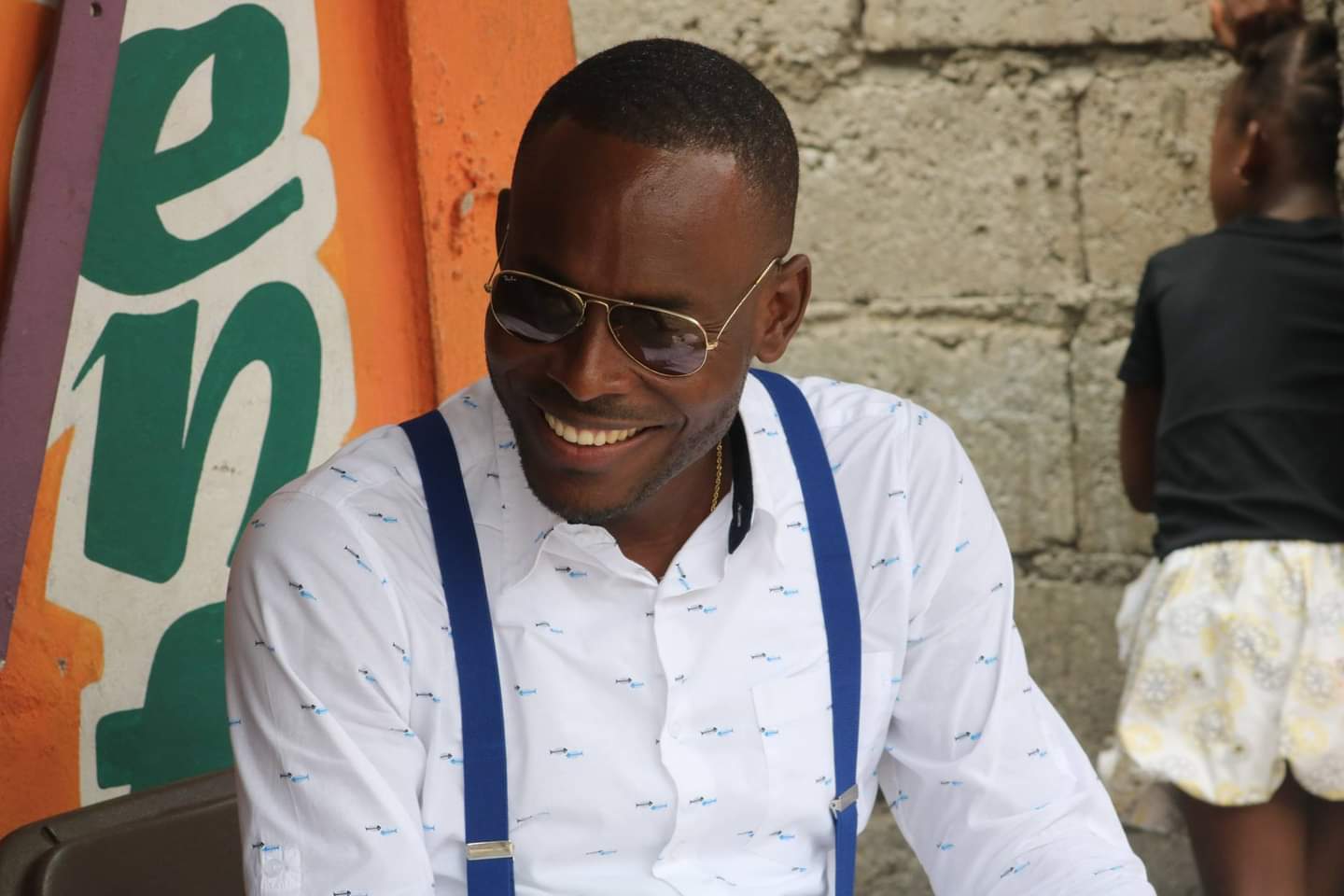
Our employee Reginald Celestin is on-site in the worst affected area. , When the storm pulled in, the Star of Hope's contact was broken with him. Then when a conversation was made again, Regie says,
" How could we prepare for this rain in the middle of a disaster zone? People have no homes to seek protection in."
He managed to transport a 140-foot container to a basketball court in the town of Les Cayes where many earthquake victims had gathered.
"They were outside, and had nowhere to go, he says. 40 people slept inside the container that night, 50 more had to sleep on top of it while the storm raged.
"Please, pray for us!"

